17 Plants For Sunrooms, from A-Z
Sharing 17 plants for sunrooms, Florida rooms, and lanais.
A sunroom is a perfect cross between an extra room and a porch. It lets the sun in on the best days and provides a warm, welcoming space for everyone to hang out on cooler days. Adding indoor plants to a sunroom is a perfect way to grow an indoor garden and reap the benefits that plants provide, both aesthetically and for your health. And whether you have a three- or four-season sunroom, it’s perfect for growing plants all year.
But, some plants do better in sunrooms than others, though, so be sure to get the right ones. Let’s look at seventeen plants for sunrooms and what they need to thrive.
Bright Light or Bright, Indirect Light?

Table of Contents
As you read through this list of plants and their requirements to thrive you will see the terms, bright, indirect light; bright light; or bright, direct light. What does that mean, anyway?
Bright, Indirect Light
Bright, indirect light is sunlight that is enough to cast a shadow, though not a clearly defined one. Figure out your north- and east-facing windows and those will be your best places to place plants that need bright, indirect light. South and west-facing windows that are shaded can also receive bright, indirect light.
Bright or Bright, Direct Light
Bright light, without the ‘indirect’ qualifier or with the ‘direct’ qualifier, typically means direct sun that is not filtered by trees or buildings. Bright light will result in sharp, clearly defined shadows. For those of us in the Northern Hemisphere, your south-facing windows will be receiving direct sun. If you are in the Southern Hemisphere, it will be your north-facing that will receive direct sun.
Some of these links may be Amazon affiliate links and I may earn a small commission from the sale of these products to help defray the costs of operating this site, but the price you are charged is not affected. You can see my full disclosure policy here.
Plants For Sunrooms, from A-Z
African Violet
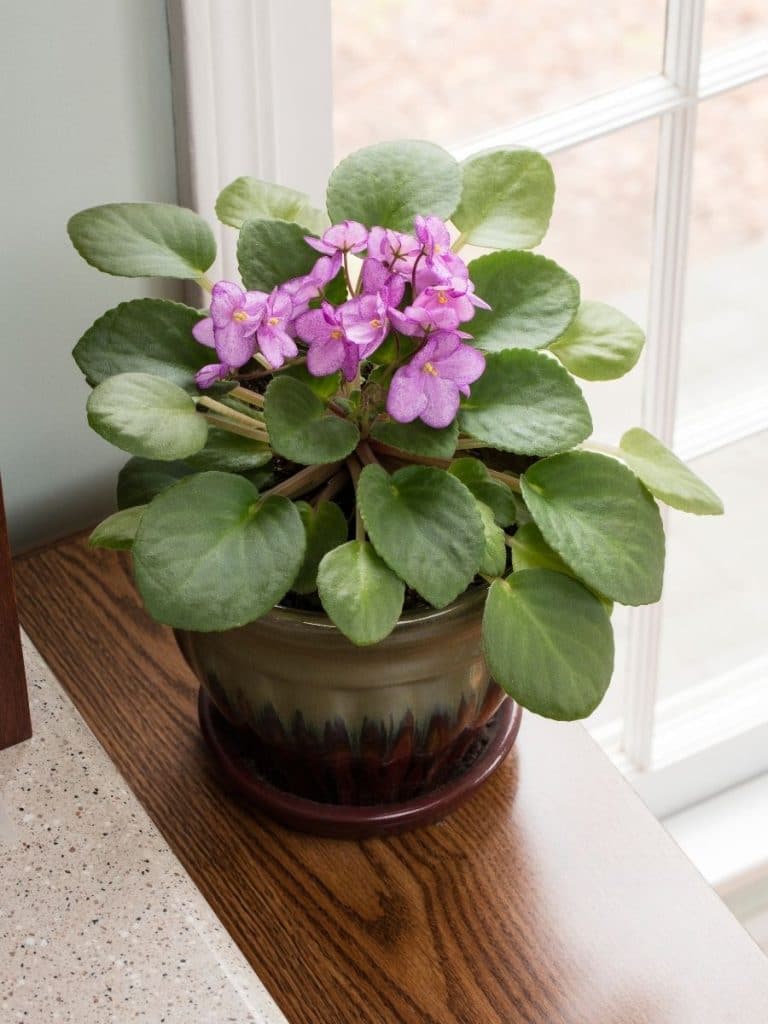
Known for their classic purple-ringed petals, African violets are one of the best plants to grow indoors. When they’re planted outdoors, they struggle to grow in soil where they have to fight for water and nutrients with surrounding plants.
To figure out how well your African violets are doing, do an environment check. Does being in your sunroom make you want to put on a light jacket or snuggle up under a blanket? That means your African violets are cold, too. They thrive in the same room temperature conditions that humans enjoy, so don’t plant them just yet if your sunroom isn’t at a comfortable temperature.
African Violets thrive in bright, but not direct sunlight. They like humidity, but don’t like their leaves to be wet. For best success, water them from their saucer but don’t let them sit in a pool of water for an extended amount of time. As you get to know your African Violet, you’ll learn just how much water it drinks at each watering.
Begonias
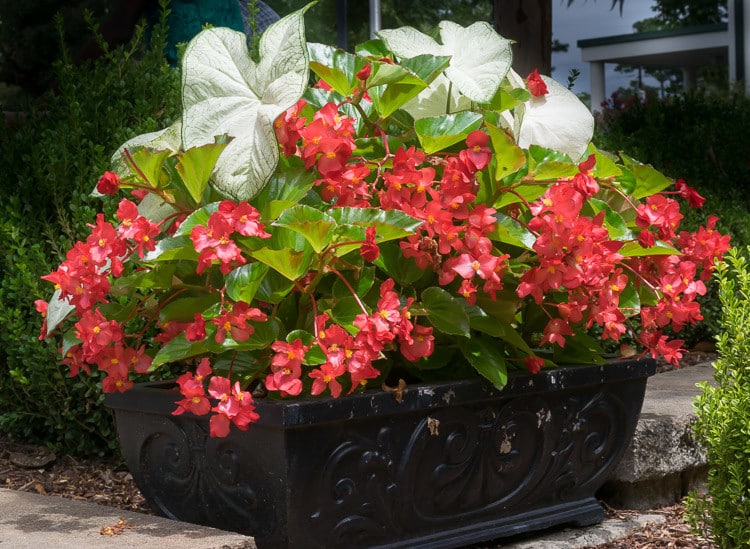
If you want a plant with a classic look, you should think about growing begonias in your sunroom. They produce tiny, colorful flowers with delicate leaves, which makes them sensitive to how they’re cared for. They’ll require plenty of water and equal amounts of drainage, so make sure you use the right pot.
Begonias also require a specific type of watering. You must pour water into the soil of the plant. If their leaves get misted or soaked, it will cause rapid decay. Begonias also prefer acidic soil, so use a store-bought pH test strip to be sure your tap water is within acceptable levels, and you’ll be good to grow begonias. Place your begonia in a window with bright, indirect light.
Boston Ferns
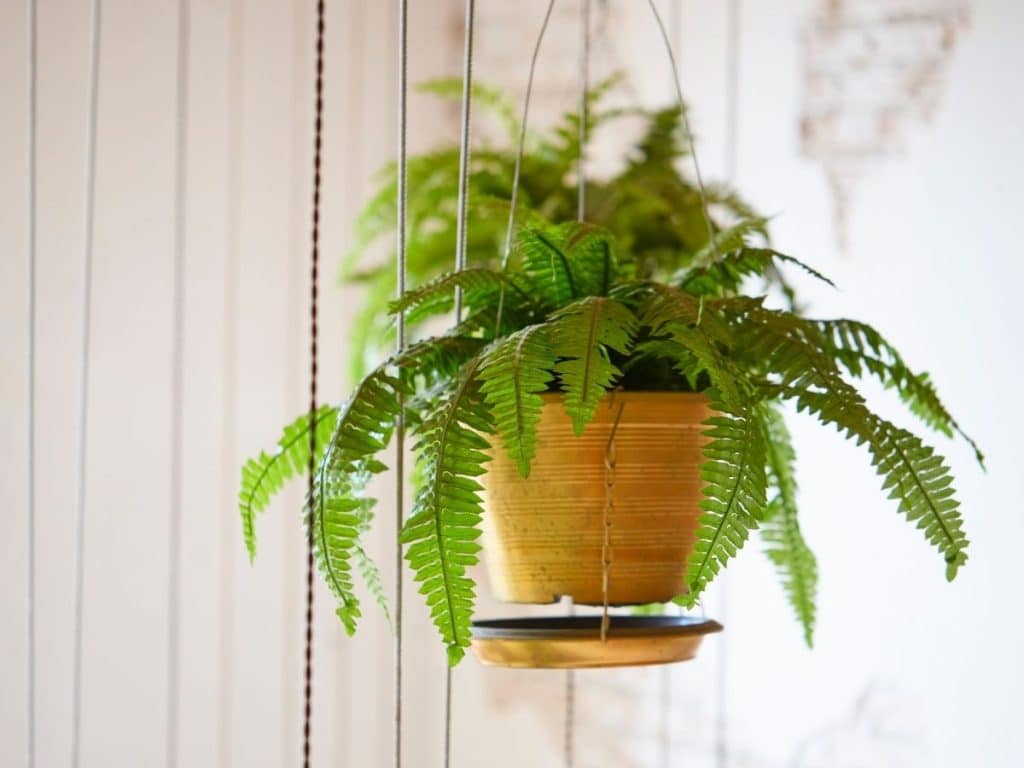
Ferns are what everyone goes crazy over at your local farmer’s market. Their leaves are super thick and a gorgeous shade of green, so people buy them up quickly to hang on their porch. If not cared for properly, they get fried in the summer heat and wilt away from the lack of water.
You can easily take care of your ferns this year in your sunroom. Hang them on hooks or plant them in large rolling pots. They’re a versatile plant that will do well in a sunroom with indirect light. Keep their soil moist.
Christmas Cactus

Heres’ a fun fact for you; there are actually three varieties of holiday cacti! Christmas Cactus, Thanksgiving Cactus, and Easter Cactus are actually epiphytes, plants that grow on other plants instead of in the soil, getting the moisture and nutrients that they need from the air and rain.
These cacti are different from the dessert dwelling succulents in that they need more moisture, but not too much! In general only water your holiday cacti when the soil mix is dry. If you are uncertain, err on the side of under-watering as opposed to over-watering.
They do best in bright, indirect ligh, such as an east or west-facing window, with a temperature between 70° and 80℉. Exposure to too much bright sunlight, especially in the summer months, can burn the foliage and not enough light can slow growth and cause the soil mix to dry too slowly.
Croton

With their colorful, autumnal leaves, adding croton or two to your sunroom in the fall just makes sense! Crotons thrive in bright, direct sunlight for about 4-8 hours a day with well-draining soil. The more sun they get, the more colorful the leaves will be. Only water these plants when the top inch of the soil is dry, though they do appreciate high humidity and occasional misting. If the humidity level is low in your house, set your croton plant on a bed of gravel in a pebble tray with a little water in the bottom of the tray. But don’t allow the water to come in contact with the bottom of the pot as crotons don’t like wet feet.
One warning, Crotons are known to be poisonous to both dogs and cats, so best suited to a home without pets.
Crown of Thorns
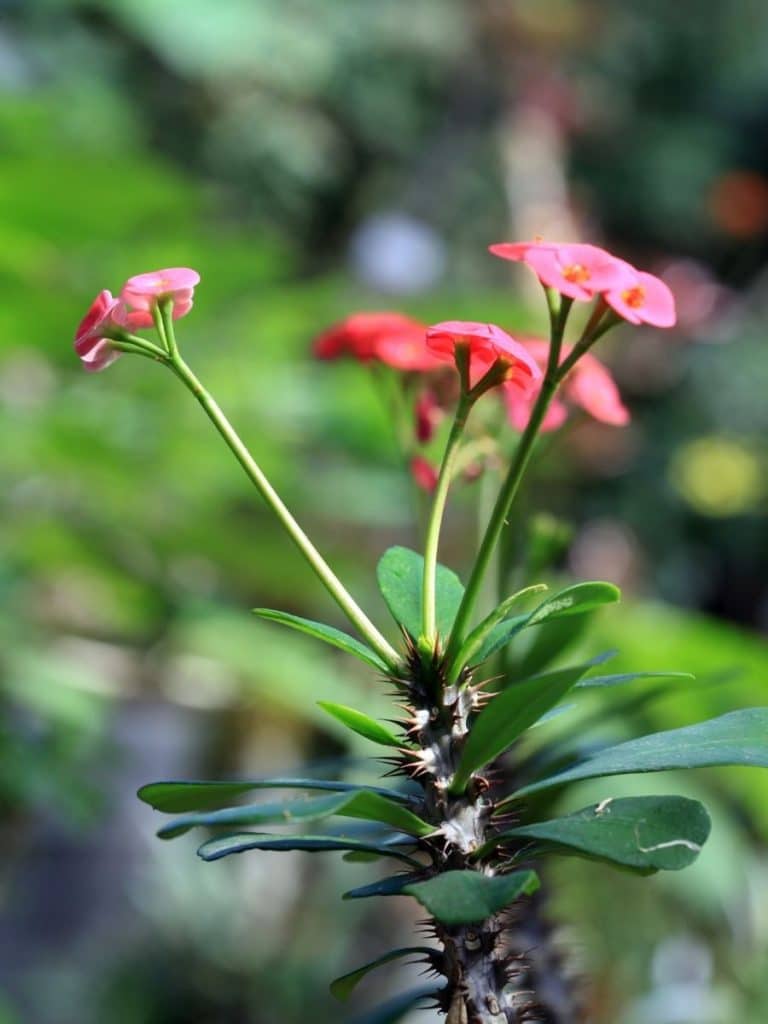
Crown of Thorns is a blooming succulent that features thorns on its woody stems. It is believed that it the crown the Jesus wore at the crucifixion was made from this plant, hence its name. Crown of Thorns should receive 4ish hours of direct sun to bloom but aren’t too picky relative to temperature. It can easily tolerate temps as low as 50° but thrives in the 65-75° zone.
This plant prefers well-draining soil and water only when the top inch is dry.
This is another plant that is best suited to a home without dogs, cats, or small children given the thorns and its poisonous sap.
Fishtail Palms

Fishtail Palm thrives in warm temperatures and a humid environment. Give it plenty of sunlight and well-draining soil, but moist soil.
Hibiscus Plants
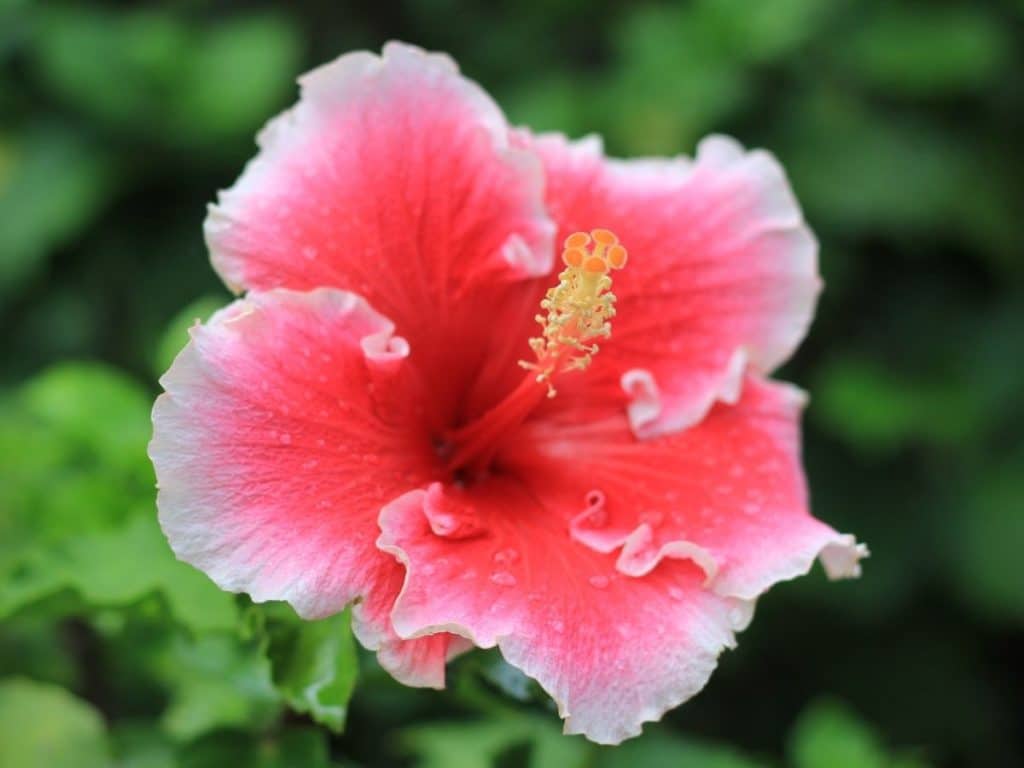
A plant that thrives in sunrooms is the hibiscus flower. This is the perfect indoor flower than can grow into a leafy bush if taken care of correctly.
Hibiscus flowers come in two variations, tropical and hardy. They need regular watering, as well as light fertilizing. You may need to water several times a week during blooming season, but be cautious not to overwater. The best way to determine if your hibiscus needs to be water is to stick your finger in the soil; if the top 1-2 inches of soil is dry the it needs to be watered. If those 1-2 inches are still damp, hold off for a few days.
Hibiscus needs about 6 hours of sun each day. During the winter months, place it in the sunniest place you have, probably near a south-facing window.
Kalanchoe
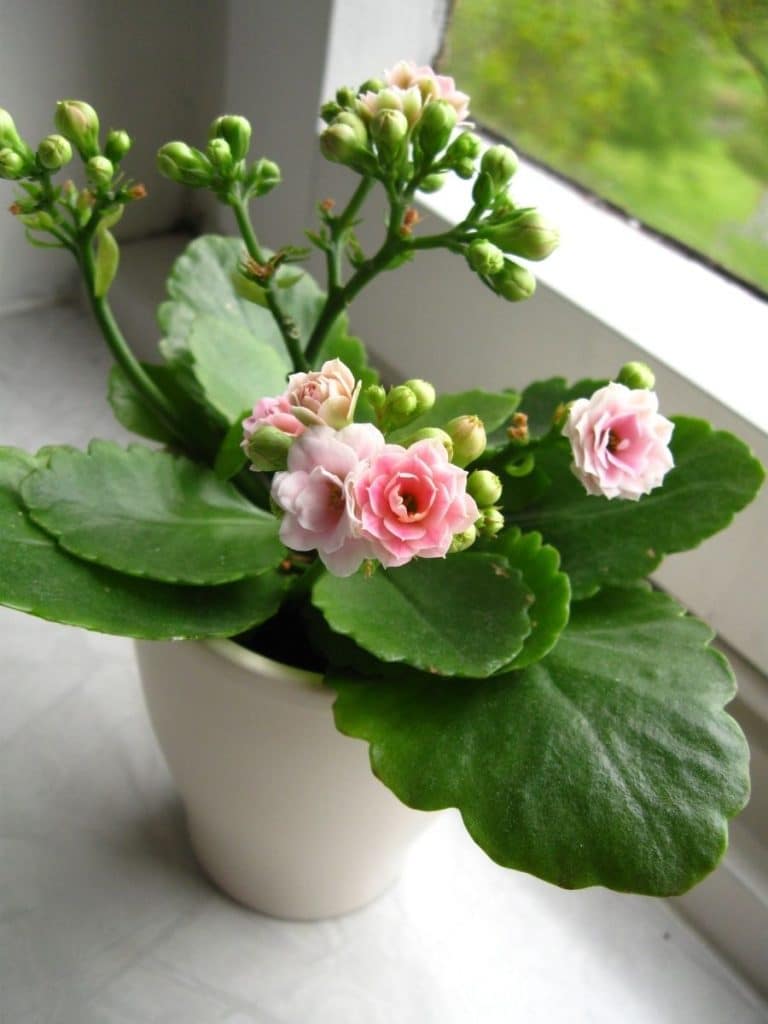
Kalanchoe is a perennial succulent that needs a lot of light to bloom, so keep them where they receive an abundance of natural, bright light. However, avoid placing Kalanchoe in direct sun, as it can scorch the leaves and reduce blooming. With red, white, orange, yellow, or pink flowers, you can find surely find a Kalanchoe to suit your indoor space.
Kalanchoe grows best in well-drained, sandy soil and does well with minimal watering. In fact, given it is succulent, its leaves store water for those times when you forgot to water it.
Meyer Lemons

These fruit-bearing citrus plants are actually the easiest plant to grow indoors. Meyer Lemon Trees do best with 8-12 hours of sun a day, so put them in a south or southwest window exposure. Like all citrus trees, Meyer Lemons prefer deep and infrequent watering, with moist but not soggy soil and frequent fertilizing with a Citrus fertilizer. This is the Citrus Fertilizer I like for our Meyer Lemons.
Orchid
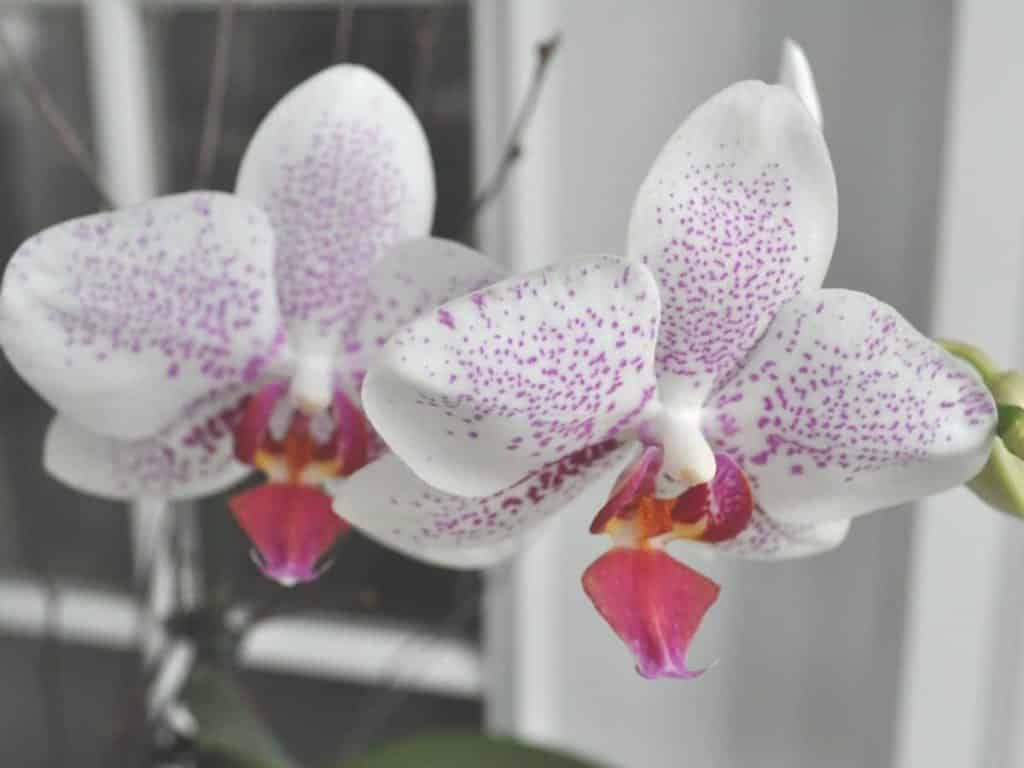
Another one of the many fantastic sunroom plants is the Orchid. With its striking, gorgeous flowers in a variety of colors, this plant has the reputation of being difficult to grow but it really is not. Like any plant, just get the light and water right! Choose an east, west or south-facing windows that receive the most direct sunshine (particularly during wintertime in the northern hemisphere). Orchids need direct sunshine for at least for a couple of hours of the day for adequate growth and flowering of orchids.
Orchids require moist, well-draining conditions. There are several types of growing media that can be used with orchid plants, such as redwood or fir bark, sphagnum peat moss, rocks, cork, charcoal, sand, and potting soil. A basic mix for growing orchids consists of bark, coarse perlite, and sphagnum moss.
Orchids prefer daytime temperatures of 75 throughout their normal growing season, but they need to be about 15 degrees (8 degrees C) cooler at night than during the day in order to bloom sufficiently.
These plants need ample water but should be allowed to dry out some between waterings. One way to check for watering is by poking your finger about an inch (2.5 cm.) into the growing media. If it’s dry, give it some water; otherwise, let it be. I water my large orchid with about 1/4 cup of water every week and my small orchid with about 2 Tablespoons of water every week. Add a bit of humidity to your orchid by misting it daily with a spray bottle or placing a tray of pebbles with water beneath it.
Passion Flower
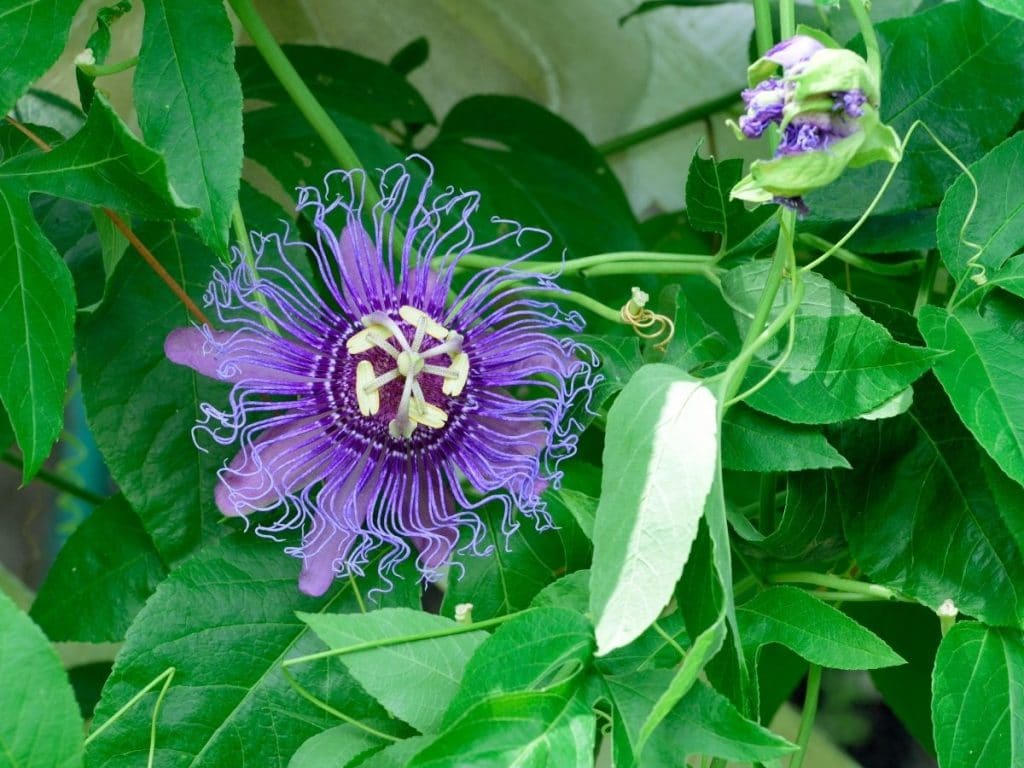
Think about how your sunroom lets sunlight in from almost every angle. That sunlight becomes trapped, warming the room. That makes it the perfect environment for tropical plants, especially the passion flower.
Consider this as your first plant if you notice your sunroom is especially warm. Give your passion flower plenty of bright light, especially during the summer growing season. Full sun is preferable! When you grow it indoors, keep the soil moist so it doesn’t get overwatered. It’s naturally a vine plant, so you’ll need to trim it occasionally. It can grow well in a sunroom if given the proper care.
The passion flower has many variations to choose from, so you can even match it to your interior decorating.
Peace Lily
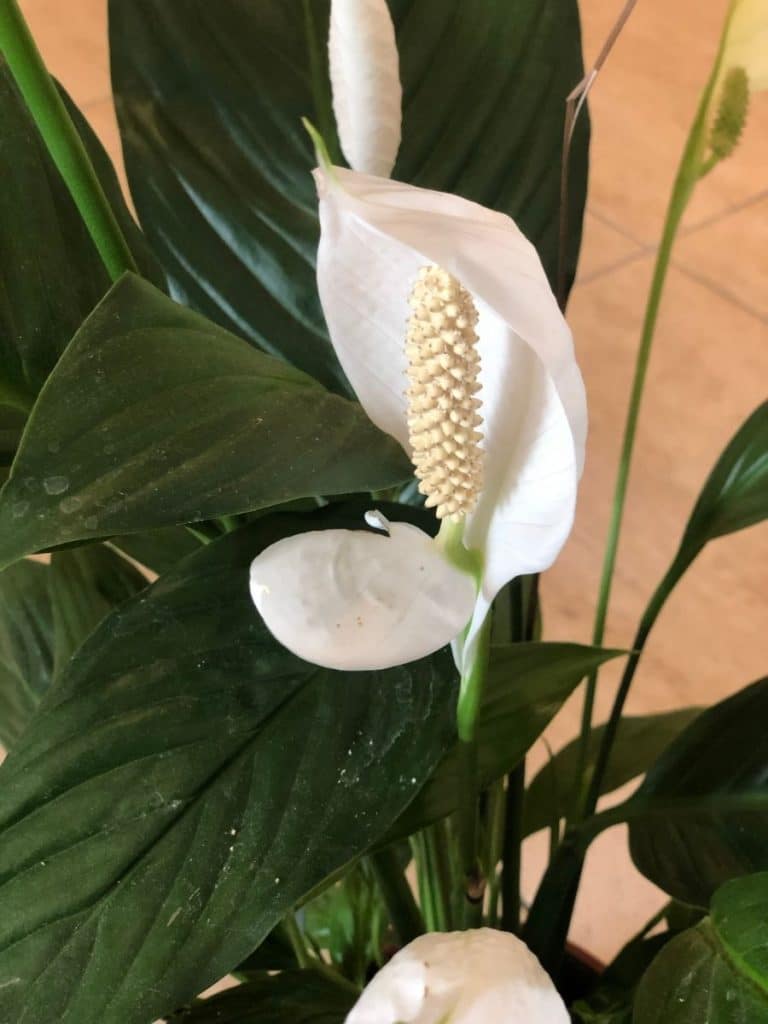
With dark green leaves and white, spade ‘flowers’, Peace Lilies are an easy-to-grow indoor plant that also excels at cleaning the air. Peace lilies prefer medium to low sunlight and well-drained soil and don’t suffer over-watering well. In fact, they tolerate underwatering more than overwatering. In order to avoid overwatering, I often wait for the leaves of my lily to start drooping before I water it. If your Peace Lily isn’t blooming, move it to where it will receive more light.
Spider Plant
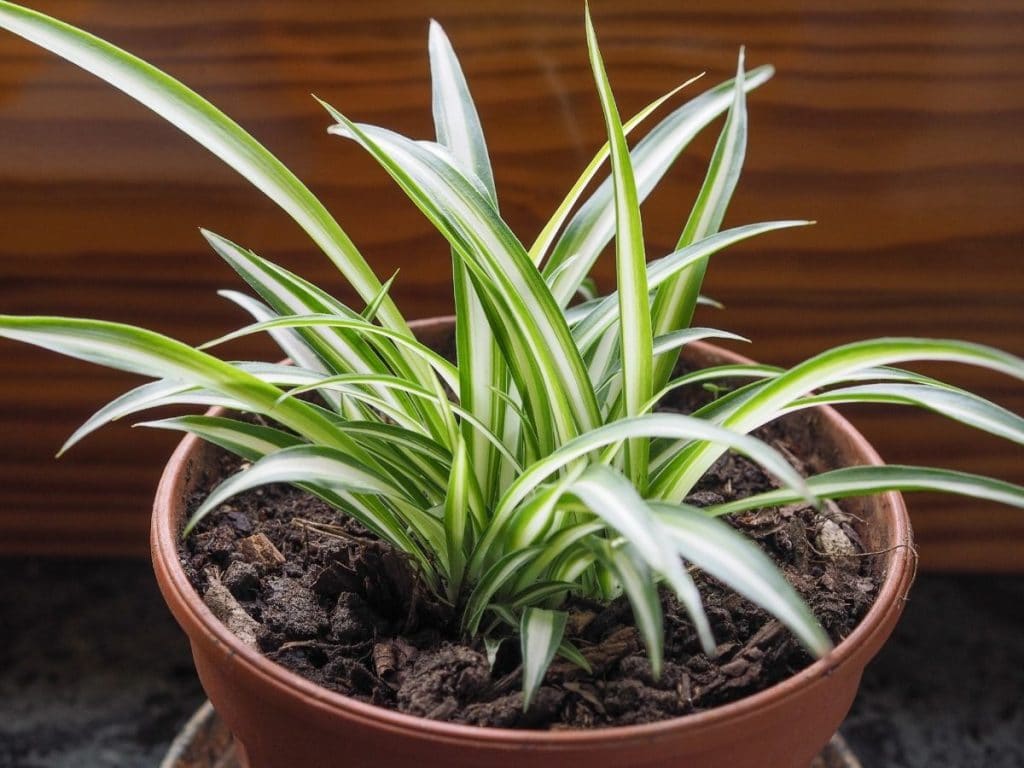
Spider plants are low maintenance and do very well indoors, so this is another plant that will thrive in your sunroom. Even if you overwater a spider plant, it’ll make a full recovery if you let them dry out, making it one of the easiest plants to grow.
The key to growing spider plants is to place them in indirect light. They’ll get easily fried by spending too much time in the sun. Plant this durable plant in a medium-sized pot and put them on a coffee or side table in your sunroom. They’ll grow quickly if they have a semi-shady spot to watch the world from.
String of Pearls
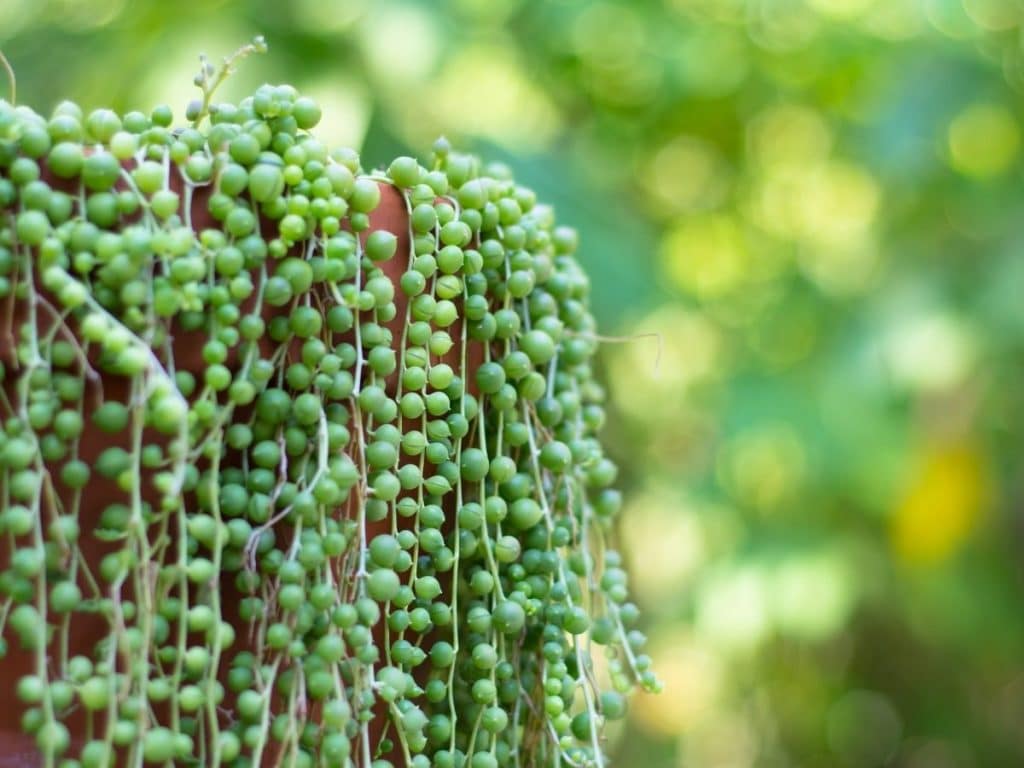
With its strands of green pearls cascading down, this succulent prefers bright, indirect light coming from overhead. This unusual and eye-catching plant doesn’t like to be overwatered, so once every other week is just fine. Be mindful of the green pearls that drop from the plant. While not deadly, the pearls will cause stomach upset if ingested by pets and people.
Umbrella Tree

While they prefer indirect light, the Umbrella Tree will tolerate direct sunlight if that’s all you have. They like humidity, but don’t like to sit in water. Once you water your plant, discard any leftover water in their saucer. Umbrella Tree Plants, also called Schefflera or Octopus Tree, will typically grow to 8-10 feet indoors, although there are some dwarf varieties available.
ZZ Plant
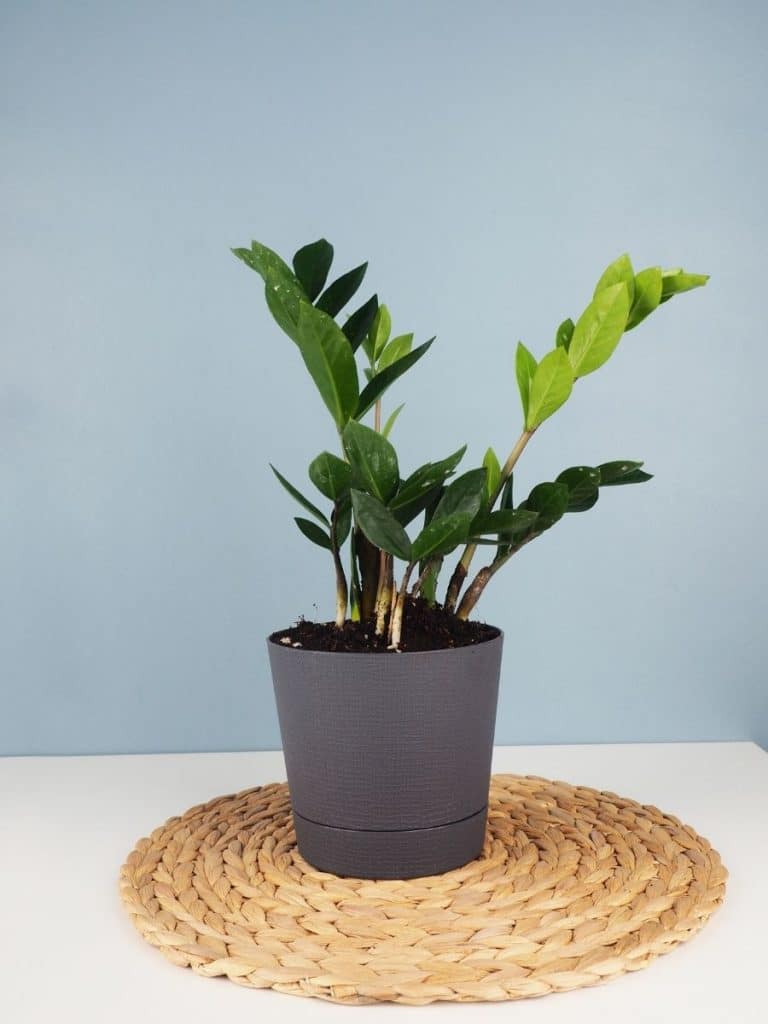
The ZZ Plant is having its 15 minutes of fame right now. And for good reason, the Zanzibar Gem is an easy-to-grow plant perfect for those not blessed with a green thumb. It is a slow-growing plant, so won’t need to be repotted any time soon. ANd Its shiny leaves make it often mistaken for a fake plant.
Put your ZZ plant someplace where it will receive bright, indirect light, although it will tolerate low light. However, if you notice it getting ‘leggy’, that’s an indicator that it isn’t getting enough light. Like the Umbrella Tree Plant, the ZZ Plant doesn’t like wet feet! Water it once a week and then throw out the water that settles in the saucer. The ZZ Plant typically can go 2-3 weeks between watering.
Check the Toxicity of Plants For Your Sunroom
If you have pets, before you fill your sunroom, patio room, or Florida room with a wide variety of plants, do a little research on the ASPCA site to determine if the house plants you are considering are toxic.
There are many options you can choose from when looking for a plant to grow in your sunroom. As long as you do your research on the ones you like the best, you’ll have a thriving plant family in no time.
To refer back to this list of 17 Plants That Thrive in Sunrooms, bookmark this page or pin the following image.
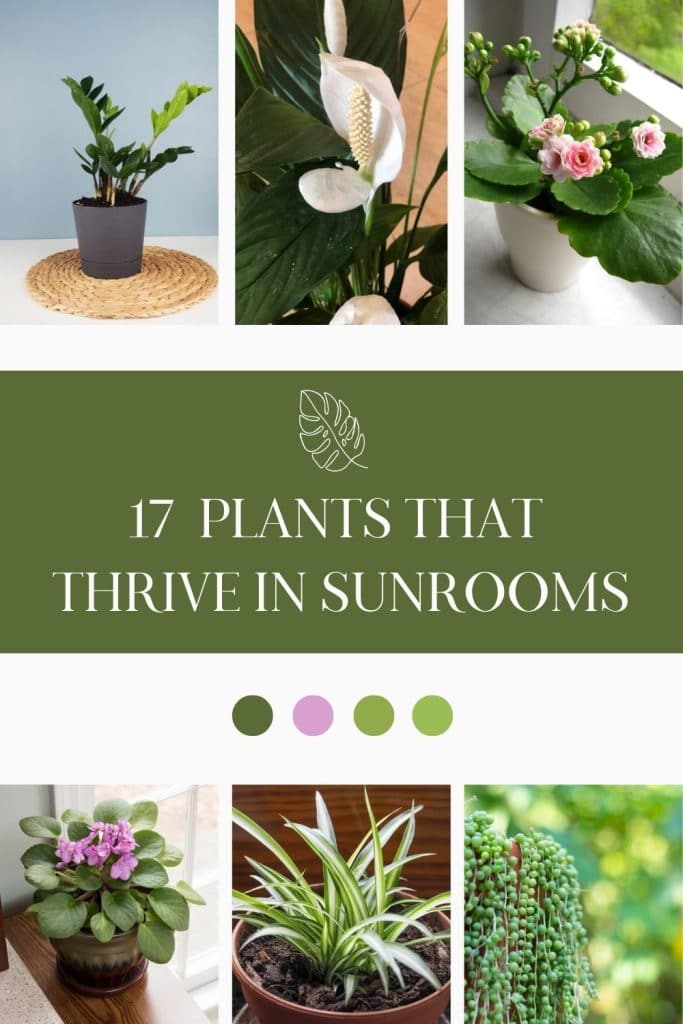
Thanks so much for spending a few minutes of your busy day with me!
To ensure you don’t miss future content, pop your email in the pale green box on the right or click here. I usually send one email weekly, so I won’t inundate your inbox. I’m sensitive to an overflowing email inbox!
We will only use your email address to send you emails, no more than 1-2 weekly. In addition, you will have access to my growing library of knit & crochet patterns and other printables. Check back often as this library will continue to grow. You can unsubscribe anytime by emailing me or clicking on the “unsubscribe” link at the bottom of all emails.
And you can access many of the products I refer to on my Nourish and Nestle Amazon Page. You can access it here.
So, if you’d like to participate in the ‘subscriber benefit’ action, simply subscribe to Nourish and Nestle here or use the form on the right sidebar. It’s slightly towards the top.
I have sent all my subscribers the link to the Subscriber Benefits Library. If you missed it or misplaced it, let me know.
Until next time…


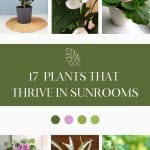
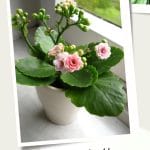



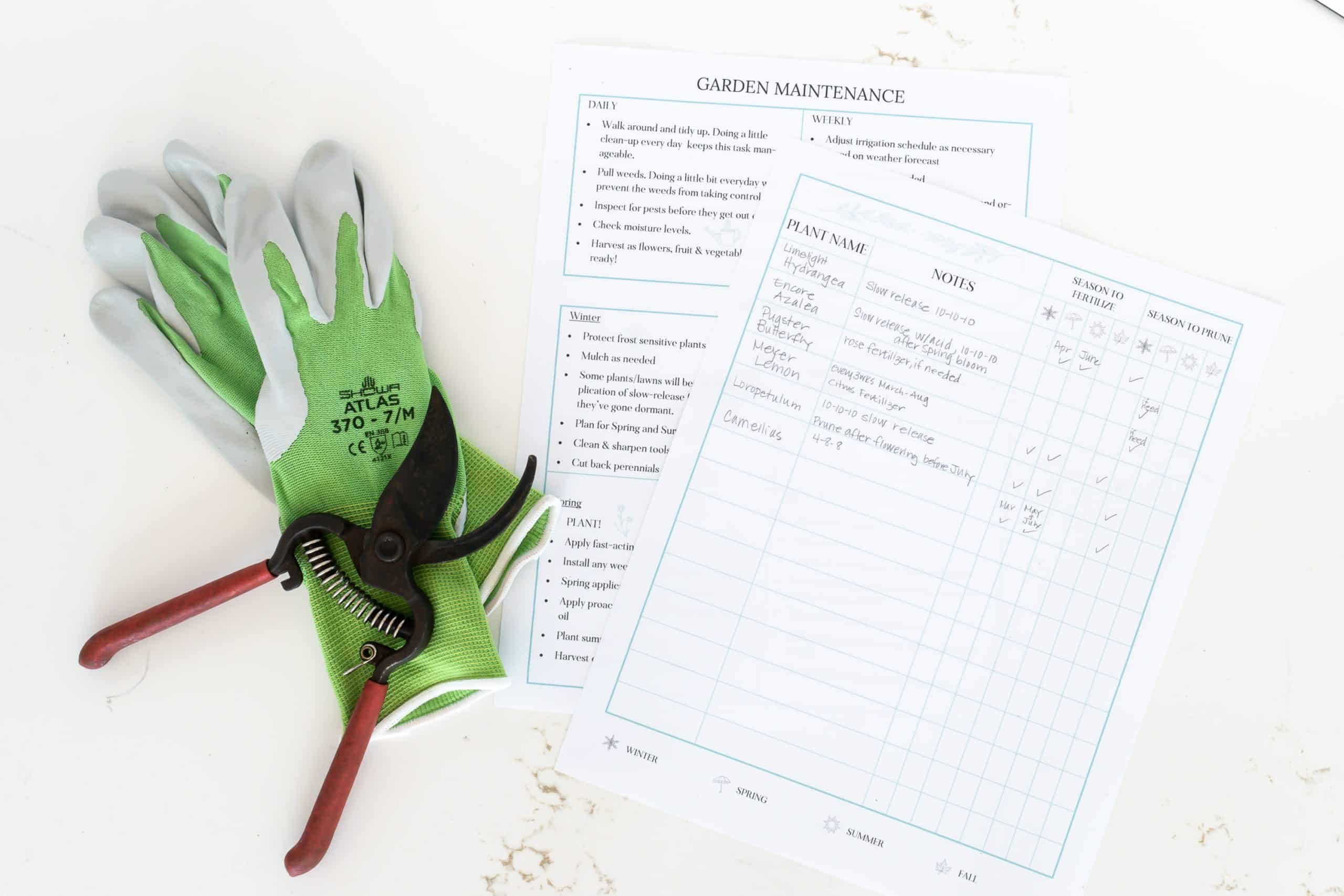
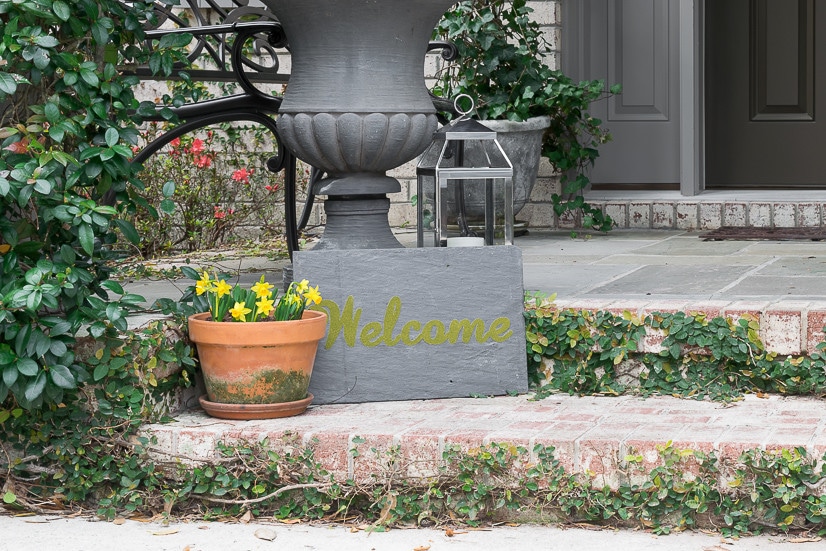
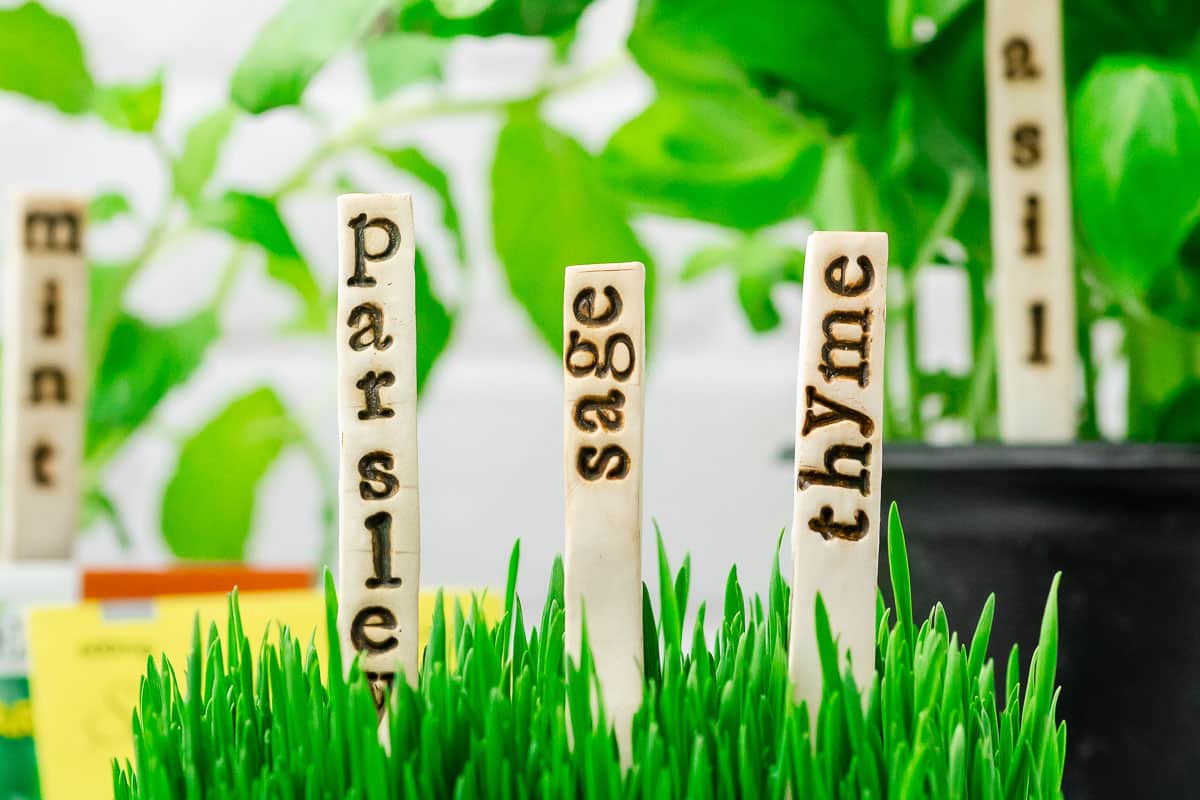

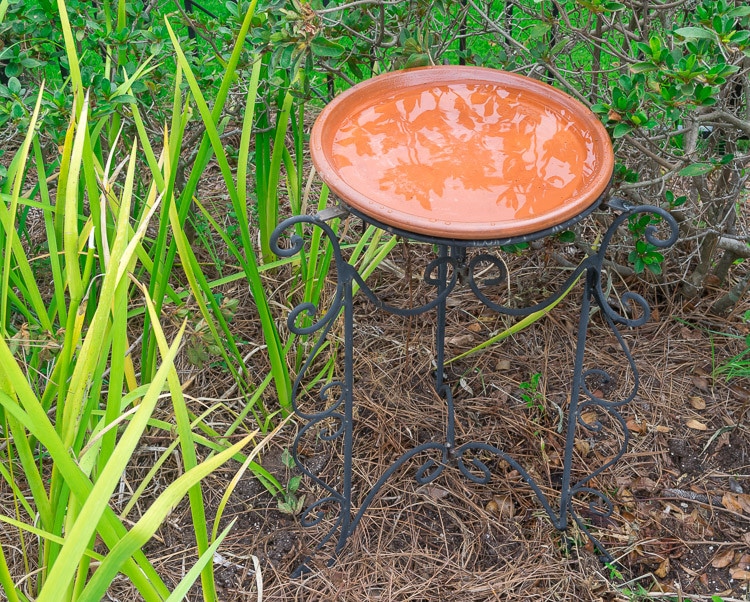

Thank you for pointing out that there are flowers that can thrive in sunrooms. I’ve been thinking about adding a sunroom to my house. It’s good to know that there are flowers that will survive in the room.
You are welcome Amy!